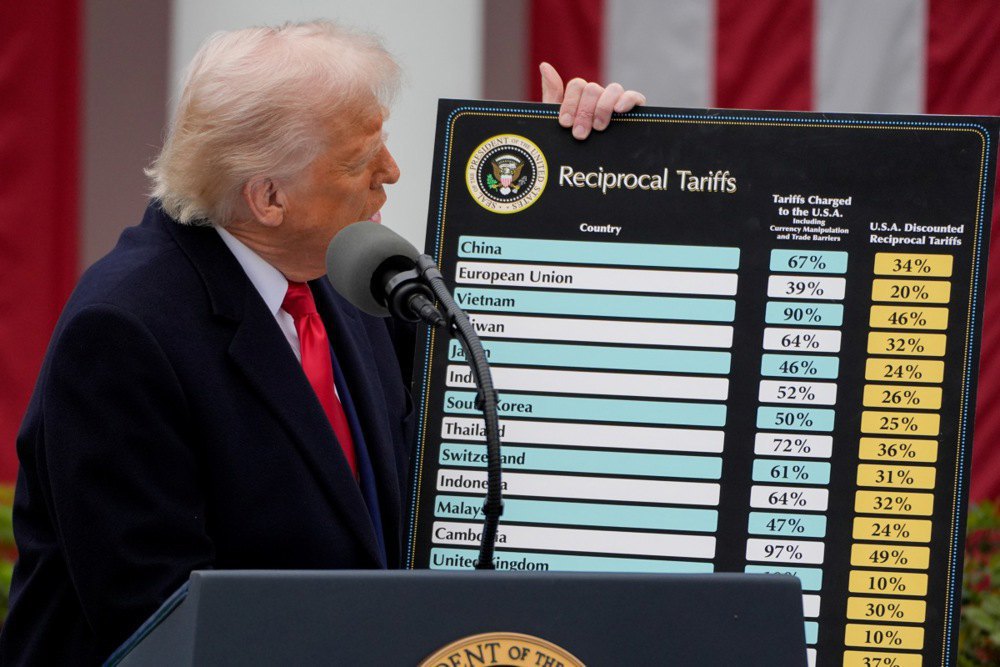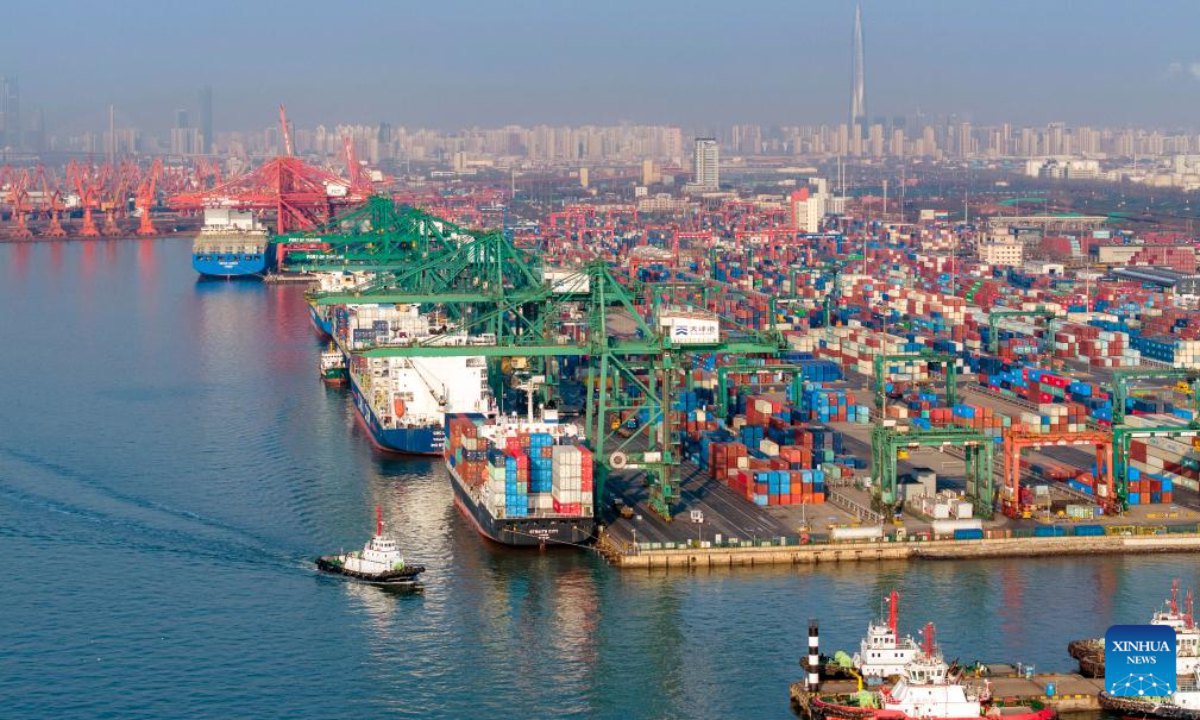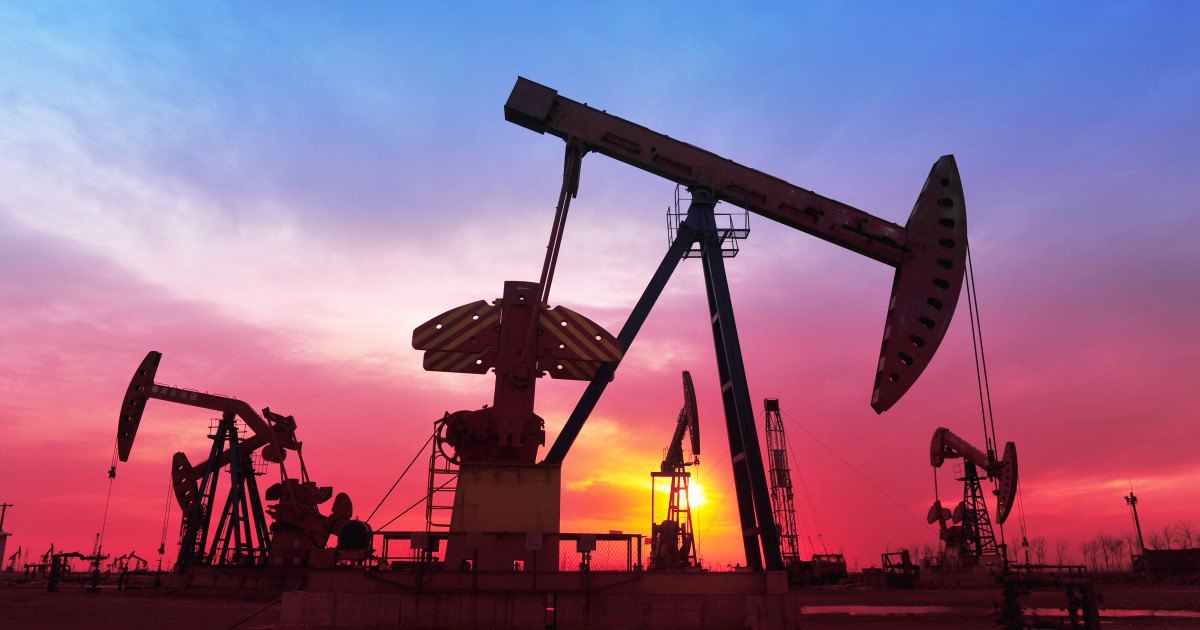
Donald Trump’s war
Donald Trump’s global trade war continues unabated and is even reaching a new level. This week, for example, the US president imposed a 104% tariff on goods from China, receiving an 84% retaliation. And the game of nerves continues.
The American president openly boasts about how he has managed to persuade many countries to negotiate. The White House has said that there are up to fifty such countries.
The global economy is on the verge of a recession, i.e. a general decline in production. It is not yet 2008, when the last major economic crisis occurred, but the world is rapidly approaching it. According to JPMorgan (one of the largest US banks), the probability of a recession has already reached 60%.
Ukraine has also been hit by the new US tariff policy: Donald Trump introduced a 10% duty. The government has already said it is ready to negotiate. However, they admitted that exports to the US are negligible ‒ just over 2% of the total (as of 2024). Ukraine mainly sells pig iron and pipes to the US. Therefore, the US duty will not affect either domestic prices or the exchange rate, the Cabinet of Ministers says. Instead, imports from the US are much higher ‒ about $3‒4 billion a year. The Ministry of Economy said it was ready to zero out duties on American goods.
“Trump is trying to force countries to negotiate with him on a much wider range of issues. He is trying to maintain US economic dominance in the world. But at the same time, he wants to isolate himself. It’s a strange combination. But the winners will not be those who run to negotiate with Trump now. Those who unite will win. China, Japan, and South Korea have a certain tariff synchronisation, and they are working out joint solutions,” said Andriy Dlihach, Doctor of Economics.

OPEC against Russia
Along with stock markets, the global oil market has also collapsed. Since last week, oil has been falling in price, with a particularly sharp drop since 9 April. That was when the 104% US duty on goods from China came into effect.
Brent crude oil is already at $60 per barrel. Investment firm Goldman Sachs predicts that the cost of the resource will continue to decline and may reach $40.
Brent is a brand of oil that has been the benchmark for pricing in the market for about half a century. The last time it fell to $60 per barrel was back in 2021. Back in early February, a barrel of Brent crude was 25% more expensive.
US WTI crude has also fallen significantly over the past two weeks, to $57 per barrel. Its price began to fall rapidly on 3 April, by more than 20% in total.
The situation is similar with Russian oil. Urals costs about $58 per barrel. This type of fuel is the main one exported from Russia. Urals is a blend of oil from different producing Regions of the Russian Federation, it is of inferior quality, so its price is calculated based on the price of Brent crude oil at a discount.
If we consider the price of Russian oil at the ports of loading (say, in Prymorsk), the Kremlin’s situation is even worse. There, the price of fuel is steadily approaching $50 per barrel. That is, it is even lower than the level of the price cap on Russian oil imposed by the Group of Seven countries in 2022. At that time, the world’s largest economies agreed that the Kremlin could not sell the resource for more than $60 per barrel.
OPEC’s decision to significantly increase production is also driving up prices on the global fuel market. The Organisation of the Petroleum Exporting Countries has decided to produce more than 400,000 barrels of oil per day starting in May. And the more goods on the market, the cheaper they are.

“Exporting countries are not satisfied that oil demand is growing at a very slow pace. And since April, OPEC has started cancelling production quotas, which will increase sales. And by dumping oil, it will push competitors’ oil out of the market. We are talking about Russia, Venezuela and the United States as well,” says energy industry expert Hennadiy Ryabtsev.
Kremlin suffers growing losses from oil slump ‒ but not yet critical
Falling prices on the global market are eating up about a quarter of Russia’s oil revenues. In the federal budget, the Kremlin has set the sale price at $69 per barrel. But real prices are already lower by about $11‒19.
Oil revenues are still one of the main sources of revenue for the Russian budget, and thus funding for the war against Ukraine. The Kremlin earns $10‒20 billion a month from oil exports (depending on demand, sanctions pressure, or market prices).
“Already, due to falling prices in the world, Russia is losing $70 million a day. This is lost profit. And they can’t do anything about it. They are just watching without any leverage,” Ryabtsev believes.
Russia spends no more than 10% of its GDP on the war against Ukraine. It is difficult to estimate the exact figures, as the Kremlin tries to carefully conceal the data. The total amount may already reach $150‒200 billion.
Therefore, Russian oil exports alone are gradually becoming insufficient to cover military spending. But Russia still has places to find additional funds. This could include new levies on bank profits, as well as the balances of the National Welfare Fund, which will be enough at least until the end of the year. In civilised countries, it is an investment in the future ‒ that is, the country extracts minerals, sells them, and invests the funds in a profitable business. For example, this is what Norway does. But Russia has been actively eating up this money for three years.
“In a crisis situation, Russia may turn to China for some serious loans. Of course, this will not be done publicly. It could be some kind of scheme. By the way, low oil prices are a positive for China. The oil scheme could be a cover. The Chinese can provide serious financial resources to the Russians now, but, they say, for future oil supplies,” suggested Mikhail Gonchar, an expert on international energy and security relations.
The Kremlin’s weak point is the cost of oil, which reaches $45. Therefore, it is not difficult to oust the Russian resource from the global market. Especially, for example, to Saudi Arabia, where the cost of the resource is several times lower ‒ less than $20.

In the first two months of 2025, the Russian budget has already broken an anti-record, with a deficit of almost 4 trillion roubles (a quarter more than the Kremlin expected).
“This can be explained by the fact that Russia had to increase spending on contract workers. Because the number of people willing to fight and sell their lives for money has fallen sharply. In many Regions, their one-time payment is already approaching $30,000,” said economist Oleg Pendzin.
The United States has all the tools to put pressure on Russia. The White House has hinted that it is considering imposing secondary sanctions on Russian oil. To be more precise, they will hit the three largest buyers of the resource ‒ China, India and Turkey ‒ the hardest. The US Senate has already registered a bill to impose a 500% duty on importers of Russian oil.
And even the hint of sanctions has already scared some buyers. Indian refineries have begun to sign contracts with the Persian Gulf countries more actively.
“If India stops buying Russian oil, it will be a near-catastrophe for the Kremlin. Because it is its main buyer. For example, last year Russia exported 108 million tonnes to China and 84 million to India. This could be a loss of tens of billions of dollars for the Russian budget, which is already in deficit,” suggests Volodymyr Omelchenko, director of energy programmes at the Razumkov Centre.
Benefits for Ukraine
Cheaper oil on the world market will also pull down fuel prices at Ukrainian petrol stations. Since the beginning of the full-scale invasion, Ukraine has been relying entirely on imports of petrol, diesel and automotive gas. New price tags at petrol stations should be expected in two weeks at the earliest.

“If the price of $65 per barrel is maintained throughout April, the price at the pump will drop by about UAH 3 for petrol and diesel. For about a year now, the supply routes have been stable, and there are two main ones. The first is southern ‒ i.e. ports in Romania, and the second is Poland, but oil products come through it not only from their refineries but also in transit from Lithuania and Germany,” explains Sergiy Kuyun, director of the A-95 Consulting Group.
The only thing that can slow down the reduction in fuel prices is fluctuations in the currency market. After all, trading and excise tax payments are made in euros. Since the beginning of the week, this currency has added about 50 kopecks to the exchange rate.
Since the beginning of February, the price of A-95 petrol has fallen by about a hryvnia, and now the average price at petrol stations is UAH 55.7 per litre. The situation with diesel fuel is similar, with the price tag mostly not exceeding UAH 55.
According to the A-95 Consulting Group, in the first quarter of 2025, demand for petrol in Ukraine increased by 16%, with imports reaching 272 thousand tonnes. In contrast, the country bought less diesel fuel from abroad by more than 14%: in the first three months of this year, traders imported more than 1.2 million tonnes.








